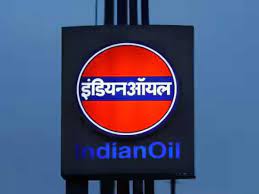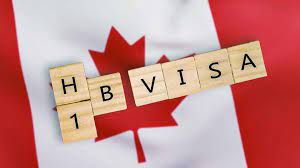IOC’s first-quarter net profit surges to Rs 13,750 Cr.
The largest quarterly net profit in a decade was recorded by India’s largest oil company, IOC, on Friday as margins on gasoline and diesel improved due to lower oil prices.
According to a company’s stock market report, the first quarter of the current fiscal year 2023–24 saw a standalone net profit of Rs 13,750.44 crore, or Rs 9.98 per share, against a loss of Rs 1,992.53 crore during the same period in the previous year.

More than half of the company’s best-ever annual earnings of Rs 24,184.10 crore, which were achieved in 2021-22 (April 2021 to March 2022) were made up by the profit, which was about 37% higher than Rs 10,058.69 crore net profit in the prior quarter.
After receiving fuel subsidies for more than a quarter of those three months, IOC reported a net profit of Rs 14,513 crore for the period January through March 2013.
In order to protect domestic customers from increasing international oil costs, IOC and other government-owned fuel retailers, Bharat Petroleum Corporation Ltd (BPCL) and Hindustan Petroleum Corporation Ltd (HPCL), frozen retail prices for gasoline and diesel last year.
Due to such freeze, the three merchants suffered significant losses not only in the first quarter of 2022 but also in the following April–June period.
Following a decline in global oil prices in the second quarter of this year, margins on gasoline and diesel became positive. Rates were left unchanged, and the firms recovered losses from the first quarter of this year.
Earlier this week, BPCL announced a net profit for the June quarter of Rs. 10,644 crore. Next Monday, HPCL is expected to release its first-quarter financial results.
Oil price declines caused IOC’s operating income to decrease 2.36 percent to Rs. 2.21 lakh crore.
Earnings before interest, taxes, depreciation, and amortization (EBITDA), which climbed by 44.5% to Rs 22,163 crore from Rs 15,340 crore sequentially, helped operational performance throughout the quarter.
In comparison to a gross refining margin (GRM) of USD 31.81 per barrel during the same time last year, the business made USD 8.34 on every barrel of crude oil converted into fuel during the quarter ended June 30.
After compensating for inventory loss or gain, the core GRM, or the current price GRM, for the months of April through June 2023 was USD 9.05 per barrel.
IOC said that fuel sales increased from 21.2 million tonnes a year earlier to 21.8 million tonnes in the first quarter. 18.26 million tonnes of crude oil were processed by its refineries, up from 17.59 million tonnes in April–June 2022.
The daily price adjustment was temporarily discontinued by IOC, BPCL, and HPCL last year, and the prices of gasoline and diesel have not been adjusted to reflect the cost. Additionally, rates have been reduced to make up for the losses they suffered when oil prices were higher than retail selling prices.
Since the fourth quarter of the 2022 calendar year, the three companies have been earning money on gasoline, but diesel, which makes up the majority of fuel sales, has been losing money.
However, in May, fuel margins improved with a meager 50 pence per litre profit.
Following the Russia-Ukraine conflict, global oil prices soared to USD 139 per barrel in March 2022. In May and June, they decreased to USD 75.
Oil companies lost Rs 17.4 per litre on gasoline and Rs 27.7 per litre on diesel at their peak. Oil companies made Rs 10 a litre in profit on gasoline during the quarter of October through December but lost Rs 6.5 on diesel. The margins on gasoline decreased to Rs 6.8 per litre in the next quarter, while those on diesel increased to Rs 0.5.
It is challenging to lower rates now that oil prices have firmed up this month and the basket of crude oil that India purchases has so far averaged USD 80 per barrel.
The three enterprises reported negative net profits as a result of maintaining pricing while input costs were greater than retail selling prices. Despite accounting for the Rs 22,000 crore declared but unpaid LPG subsidy, they reported a total net loss of Rs 21,201.18 crore from April to September.
The previous several years have seen volatility in the price of oil on the global market. It plunged into the negative territory at the onset of the pandemic in 2020 and fluctuated wildly in 2022, reaching a 14-year high of about USD 140 per barrel in March 2022 when Russia invaded Ukraine before falling on decreased demand from its biggest importer China and concerns about an economic slowdown.
However, the surge meant adding to already firming inflation and stalling the pandemic-related economic recovery for a country that is 85% reliant on imports.
So, the three fuel merchants, who together account for around 90% of the market, extended the longest price freeze in at least two decades for gasoline and diesel. When rates nationwide reached an all-time high in early November 2021, they stopped revising prices on a daily basis. This forced the government to reverse back some of the excise tax increase it had implemented during the epidemic to take advantage of cheap oil costs.
The freeze persisted into 2022, but the war-related spike in oil prices led to a Rs 10 per litre increase in the price of gasoline and diesel starting in mid-March. However, another round of excise duty cuts completely eliminated the Rs 13 and Rs 16 per litre increase in taxes on gasoline and diesel that were impacted by the pandemic.
That came after the current price freeze, which started on April 6 and is still in effect.






